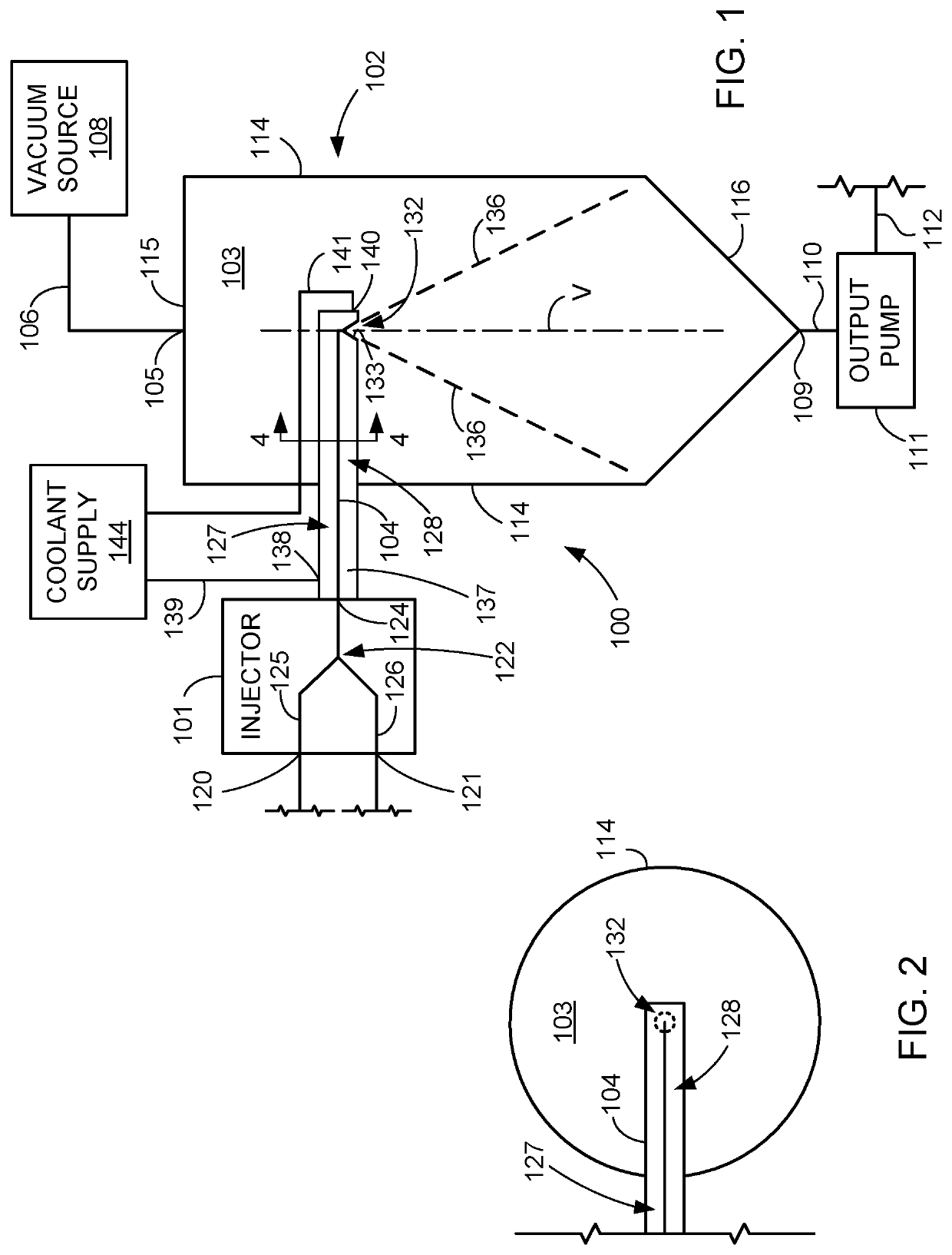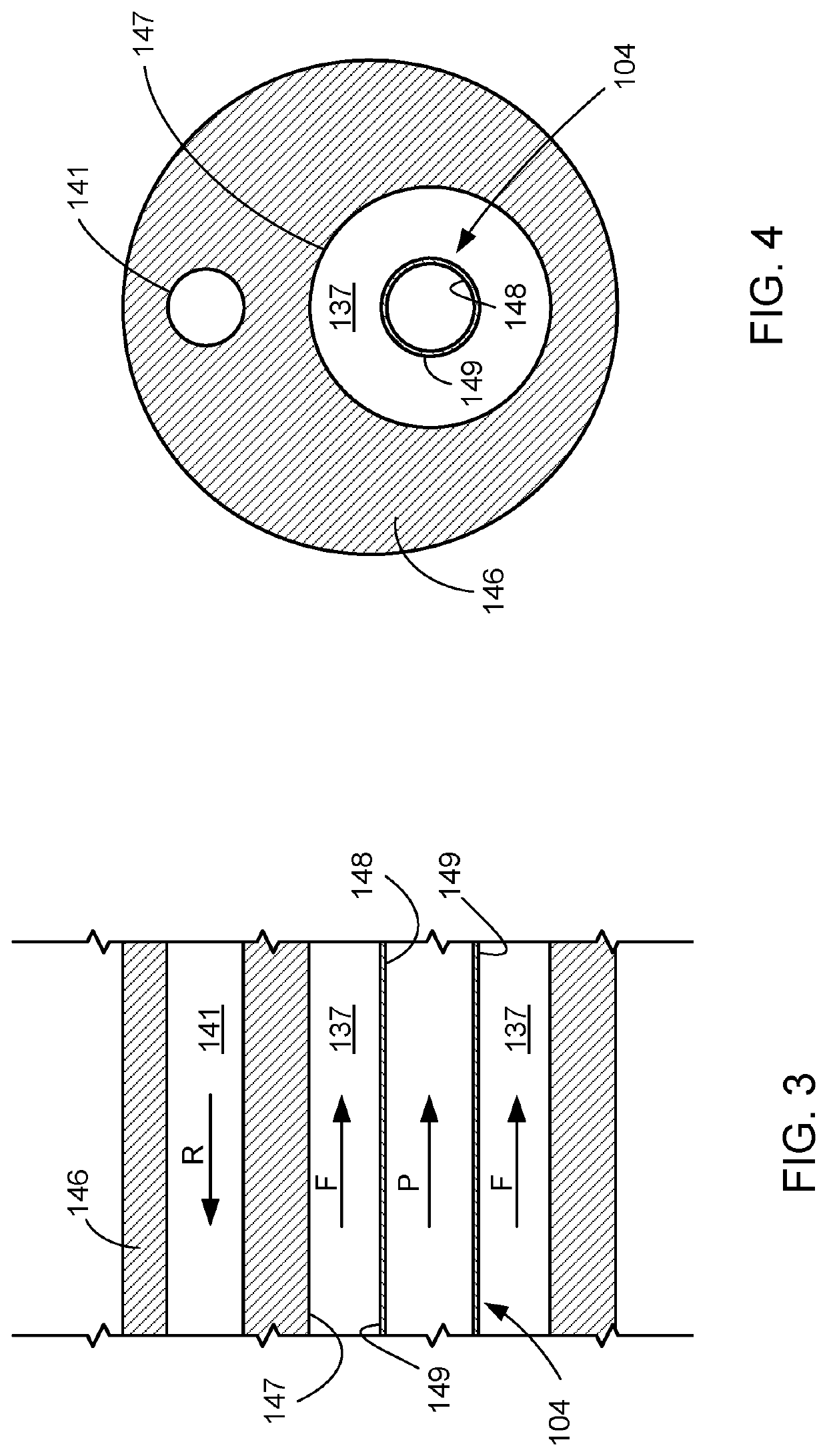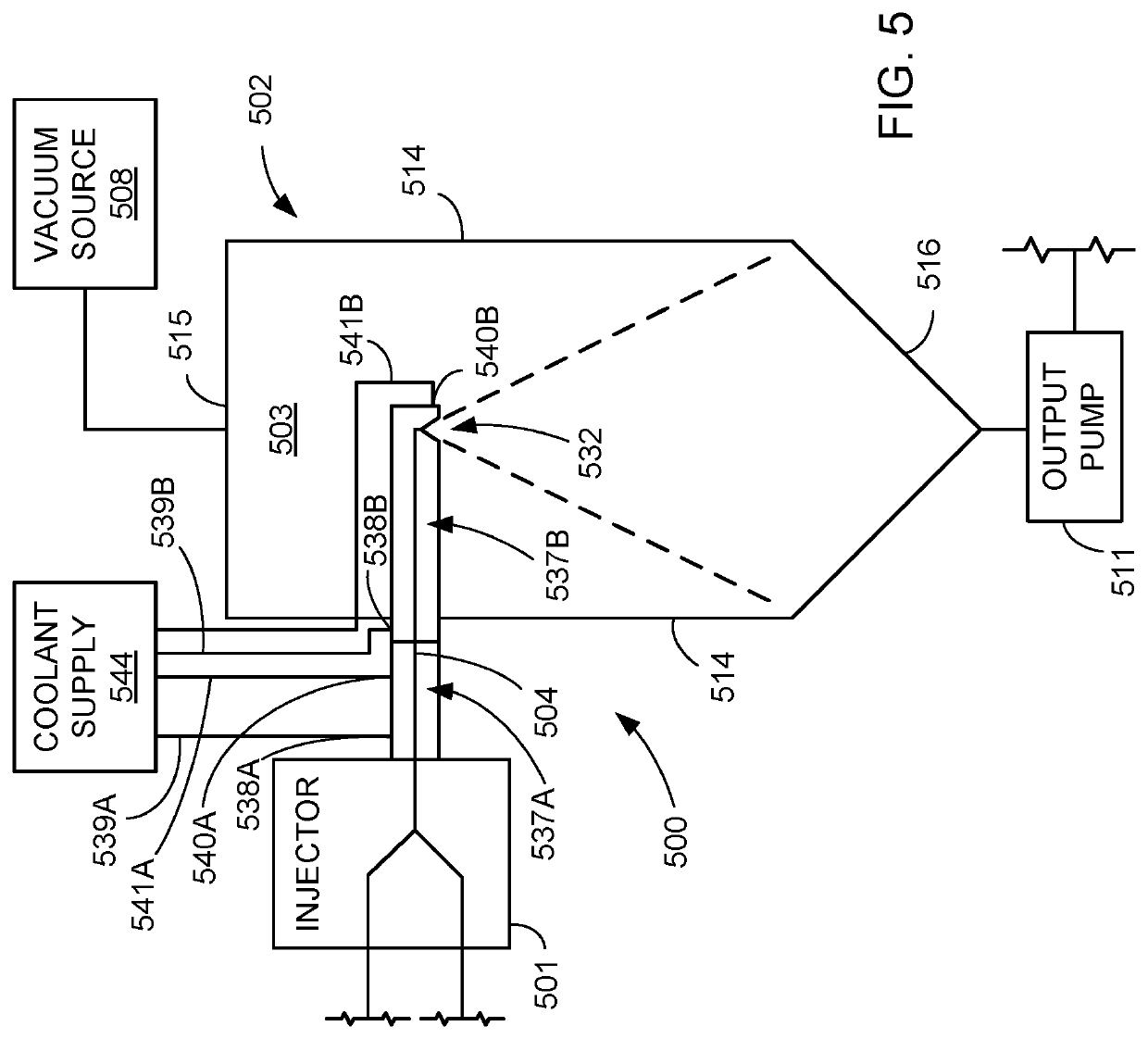Systems and methods for receiving the output of a direct steam injector
a direct steam injection and output technology, applied in the direction of milk preservation, lighting and heating apparatus, egg preservation by heating, etc., can solve the problems of increased operating costs of such systems, steam injection systems, and deposition of materials from products, so as to reduce or eliminate the deposition of product constituents and increase the run time
- Summary
- Abstract
- Description
- Claims
- Application Information
AI Technical Summary
Benefits of technology
Problems solved by technology
Method used
Image
Examples
Embodiment Construction
[0034]Referring to FIG. 1, a steam injection system 100 includes a steam injector 101 and a vacuum chamber 102. Vacuum chamber 102 includes a vacuum port 105 connected by a suitable vacuum conduit 106 to a vacuum source 108, and also includes an outlet port 109 connected by a suitable product outlet conduit 110 to an output pump 111. Steam injection system 100 also includes a mixture flow path which extends from injector 101 to vacuum chamber 102. In this case the mixture flow path is defined by a hold conduit 104 extending from steam injector 101 to a location within the interior of vacuum chamber 102, that is, a location within vacuum chamber volume 103.
[0035]Vacuum chamber 102 comprises a suitable vessel which defines the vacuum chamber volume 103. In particular, vacuum chamber 102 includes lateral walls 114, a top wall 115 and cone-shaped bottom wall 116 which together define vacuum chamber volume 103. As indicated in FIG. 1 vacuum chamber 102 may be elongated along a vertical a...
PUM
| Property | Measurement | Unit |
|---|---|---|
| temperature | aaaaa | aaaaa |
| thermal conductivity | aaaaa | aaaaa |
| temperatures | aaaaa | aaaaa |
Abstract
Description
Claims
Application Information
 Login to View More
Login to View More - R&D
- Intellectual Property
- Life Sciences
- Materials
- Tech Scout
- Unparalleled Data Quality
- Higher Quality Content
- 60% Fewer Hallucinations
Browse by: Latest US Patents, China's latest patents, Technical Efficacy Thesaurus, Application Domain, Technology Topic, Popular Technical Reports.
© 2025 PatSnap. All rights reserved.Legal|Privacy policy|Modern Slavery Act Transparency Statement|Sitemap|About US| Contact US: help@patsnap.com



